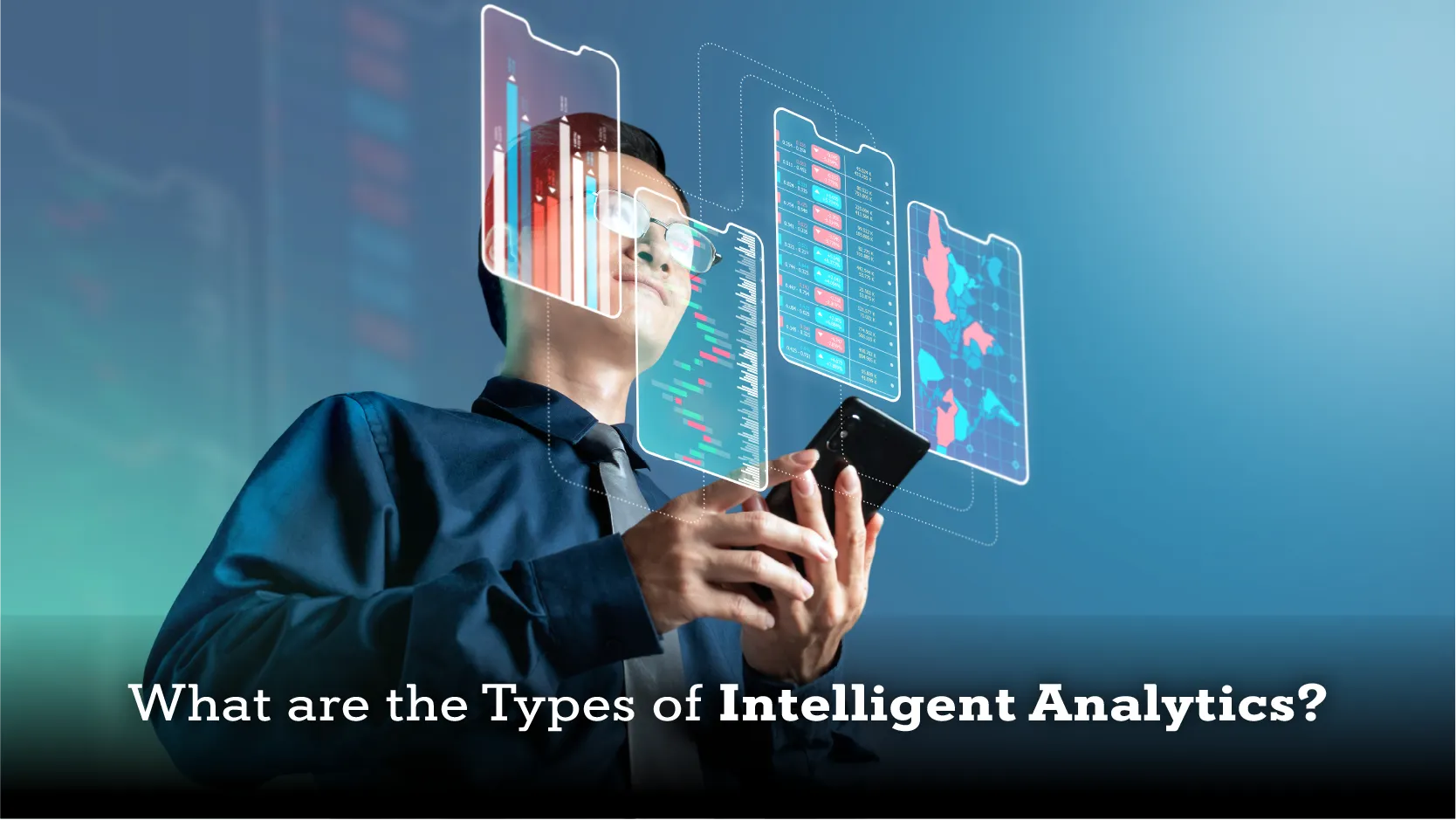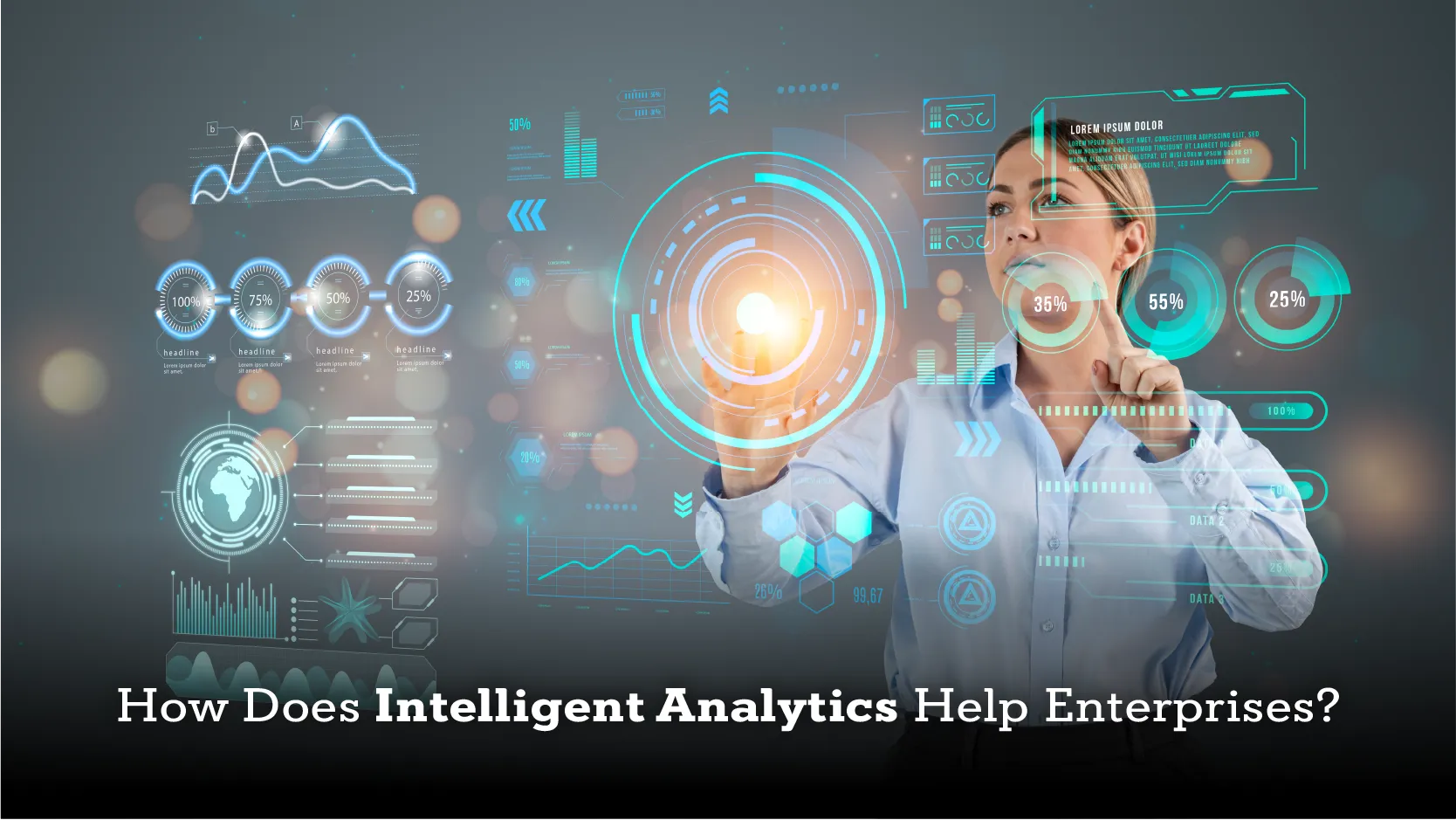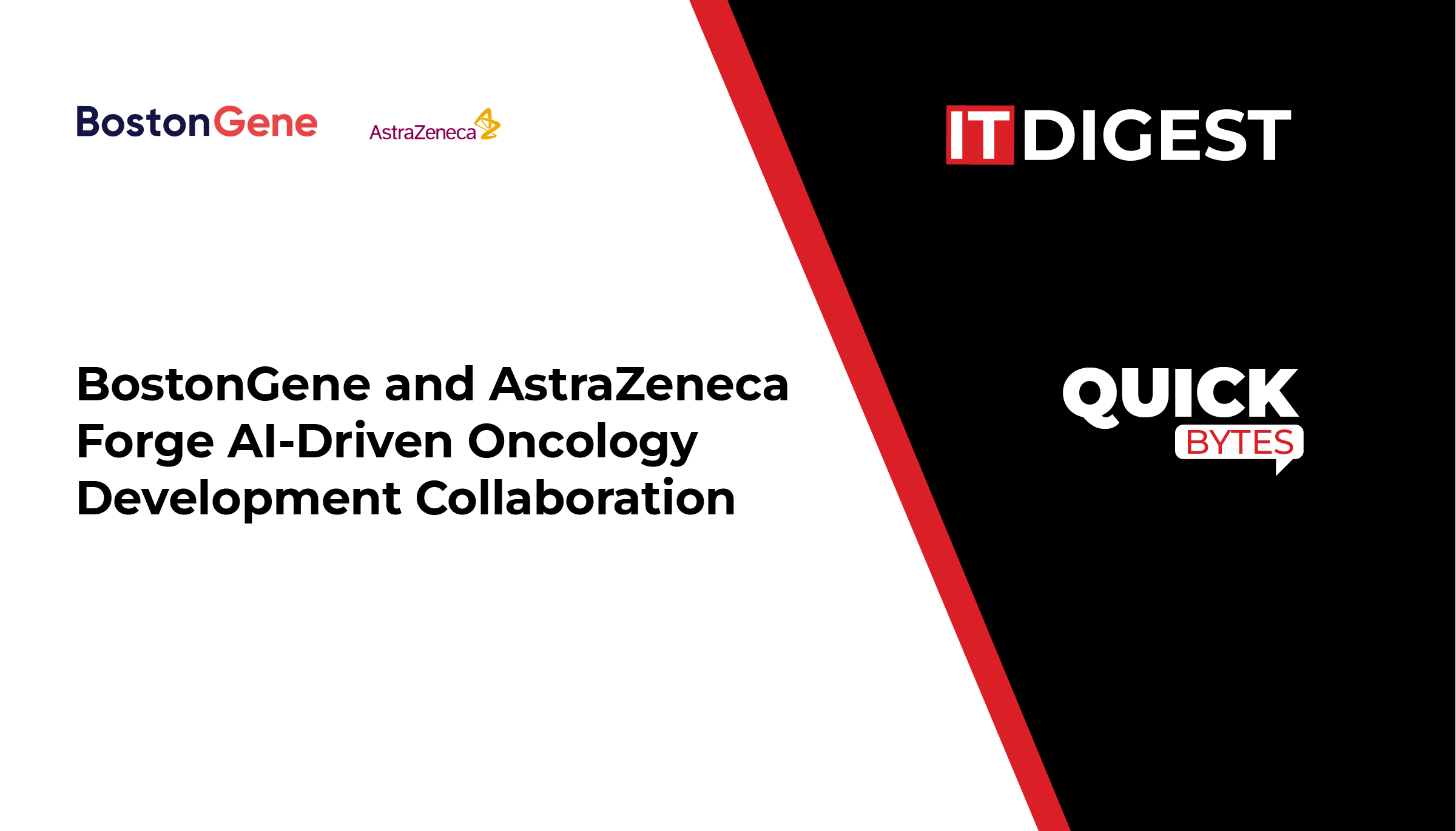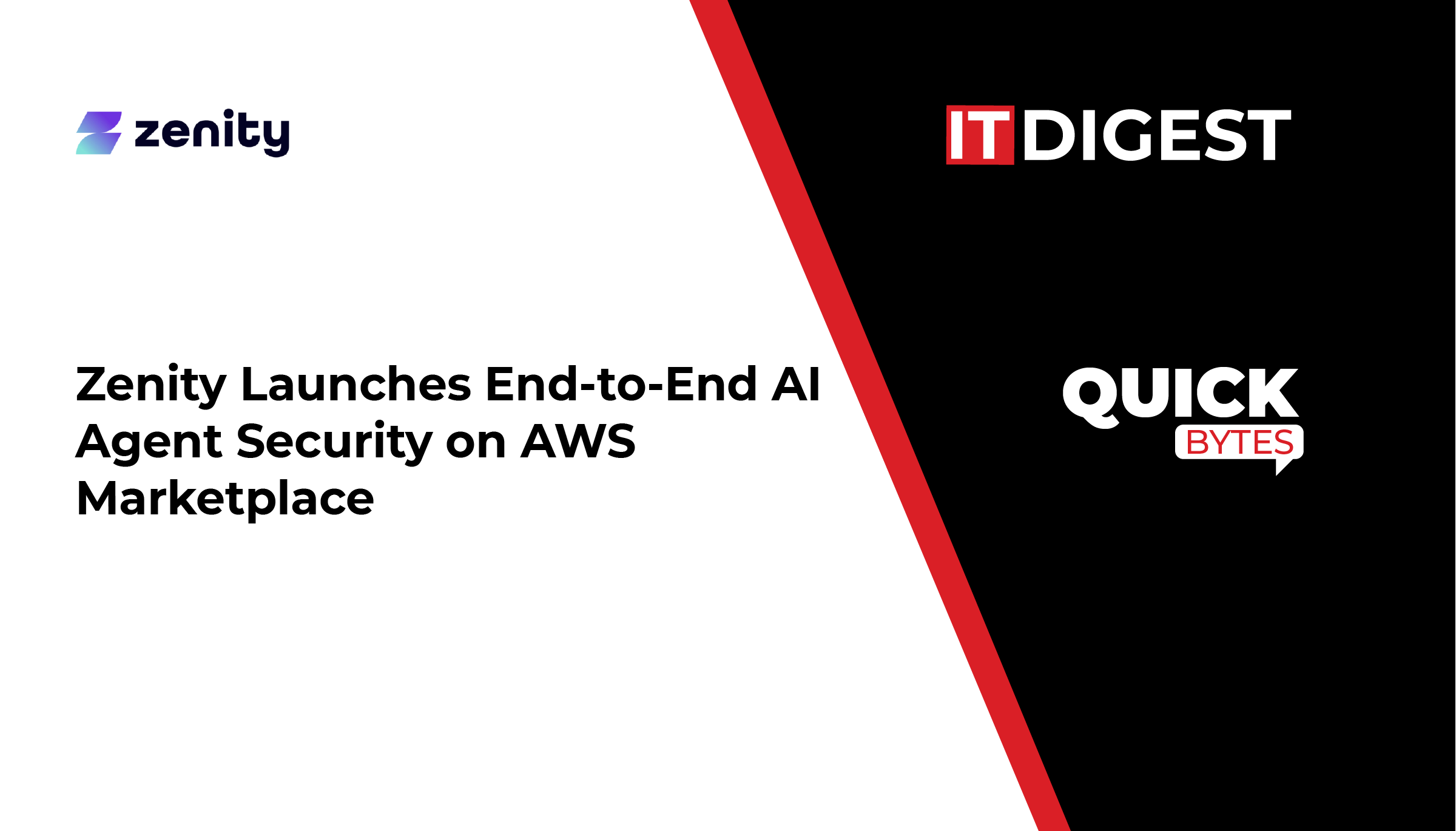Intelligent analytics is an evolving technology in today’s landscape, where other technologies such as analytics, big data, and artificial intelligence (AI) are revolutionizing paradigms. This blog explores the definition of intelligent analytics, its types, and ways businesses can benefit from the technology:
What is Intelligent Analytics?
The processes and technologies of gathering, structuring, and evaluating big data, big wisdom, big knowledge, and big information to get valuable intelligent insights from the data gathered are referred to as intelligent analytics. Businesses can embrace the right processes to gather knowledge and transform it into intelligence by identifying the patterns in the data sets by leveraging technologies such as artificial intelligence (AI), big data analytics, and intelligent systems.
What are the Types of Intelligent Analytics?
 Businesses can embrace multiple ways to evaluate the gathered data. The intelligence derived from the collected data will assist businesses in identifying behavioral patterns or elaborating and classifying a particular problem. Following are the three types of intelligent analytics:
Businesses can embrace multiple ways to evaluate the gathered data. The intelligence derived from the collected data will assist businesses in identifying behavioral patterns or elaborating and classifying a particular problem. Following are the three types of intelligent analytics:
1. Descriptive Analytics
Descriptive analytics is one of the most well-known and fundamental types of analytics that businesses use. Enterprises can leverage this type of analytics to monitor operational performance and trends. Descriptive intelligent analytics will have the following key performance indicators (KPIs):
- Revenue per client
- Year-over-year percentage sales rise
- Average consumer time taken to pay bills
Descriptive intelligent analytics is leveraged in financial statements, multiple dashboards, reports, and presentations. Evaluating all the sales transactions individually of the last quarter will not offer a holistic view of how much the consumer spends on average or if the entire sales were higher or lower than the preceding quarters.
Also Read: What is Cloud Analytics? Types, Benefits, Working
Embracing descriptive analytics is the first step toward making sense of the unstructured data. This type of analysis utilizes basic mathematical strategies to create summary data like average revenue per customer. It will offer decision-makers a better understanding of the organization’s current scenarios.
2. Predictive Analytics
Intelligent analytics that relies on previous historical data, data mining strategies, machine learning, and statistical modeling to generate forecasts about future scenarios is referred to as predictive analytics. Enterprises can depend on predictive analytics for determining risks and opportunities by evaluating the data trends,
Big data and data science is one of the most commonly linked to predictive analytics. Data has become a crucial part of modern businesses, which they generate on a daily basis. This data is spread across equipment log files, pictures, sensors, videos, transactional databases, and other data sets.
Data scientists use deep learning and machine learning algorithms to identify patterns in data and make forecasts about potential future occurrences. Following are a few examples of the above-mentioned examples of this strategy:
- Neural networks
- Decision trees
- Support vector machines
- Linear and nonlinear regression
Business decision-makers might use predictive analytics learning later to have prescriptive analytics to derive valuable actions depending on forecasted outcomes.
3. Prescriptive Analytics
A statistical method for identifying the best action plan or action needed for a specific situation depending on the data. For perspective analytics, both predictive and descriptive analytics are used. However, the priority in such a situation is on getting actionable insights instead of monitoring the data. The result of predictive analytics algorithms is the data required for having predictive analytics.
It can be difficult to have a clear understanding of what exactly the future holds. However, businesses can use perspective analytics to determine the best action plan. This approach is leveraged to offer suggestions and improve decision-making depending on the computational results of the algorithmic models.
How Does Intelligent Analytics Help Enterprises?
 In order to have smooth business operations, intelligent analytics tools have become a necessary tool. This approach is important for various IT service management operations. It can be challenging to make data accessible and evaluate it in a central location in an intricate and heterogeneous environment of applications, tools, and other infrastructure components. Not having visibility in the IT infrastructure can be a significant challenge for efficient tracking and productivity. Additionally, it will increase the service delivery costs. Following are a few ways that will help enterprises with intelligent analytics:
In order to have smooth business operations, intelligent analytics tools have become a necessary tool. This approach is important for various IT service management operations. It can be challenging to make data accessible and evaluate it in a central location in an intricate and heterogeneous environment of applications, tools, and other infrastructure components. Not having visibility in the IT infrastructure can be a significant challenge for efficient tracking and productivity. Additionally, it will increase the service delivery costs. Following are a few ways that will help enterprises with intelligent analytics:
1. Enhance Productivity and Service Dependency
The usage of memory and disk patterns will highlight the patterns of an organization’s storage requirements. IT decision-makers can leverage these patterns to predict the storage capacity needs of the organization.
IT teams can start tracking the peak business activities and manage technicians’ workloads by leveraging the dashboards in real time. This approach will help organizations to ensure that the IT personnel are well-staffed and are not overburdened with daily tasks. It is an effective way to improve service desk efficiency and minimize the costs within the company.
2. Deliver an Enhanced Customer Experience
Embracing intelligent analytics will help enterprises to have a prediction of potential service disruptions and average incident ticket levels. Businesses can even use the data to identify the correlation between ticket resolution times and reopen rates. The more the quantities of reopened tickets have an influence on the technicians’ work processes and SLA compliance.
3. Higher Network Uptime and Efficient Resource Allocation
It has become crucial for enterprises to keep track of the alerts for unusual trends and changes in the network and resource utilization. IT teams can make the most out of multiple advantages from proactive network and application management. Many IT teams can find it challenging to have proactive operations management. However, integrating centralized insights tools can assist managers in having higher availability.
Big data is the fuel that propels enterprises to make smart decisions. It helps enterprises to prevent bad incidents and replicate successful events once they have happened.
Wrapping up Intelligent Analytics
Various industries can leverage intelligent analytics strategies to optimize their business operations by making valuable insights out of the data gathered. Intelligent analytics is a result of the amalgamation of various variables like advanced computational power, minimizing storage costs, cloud-based services that allow immense compute and storage capacity, and advancements in functionalities of analytics systems.
































